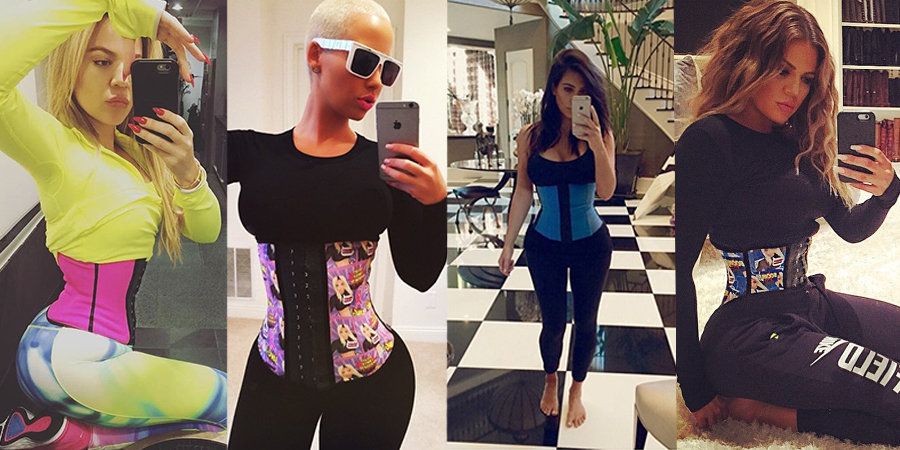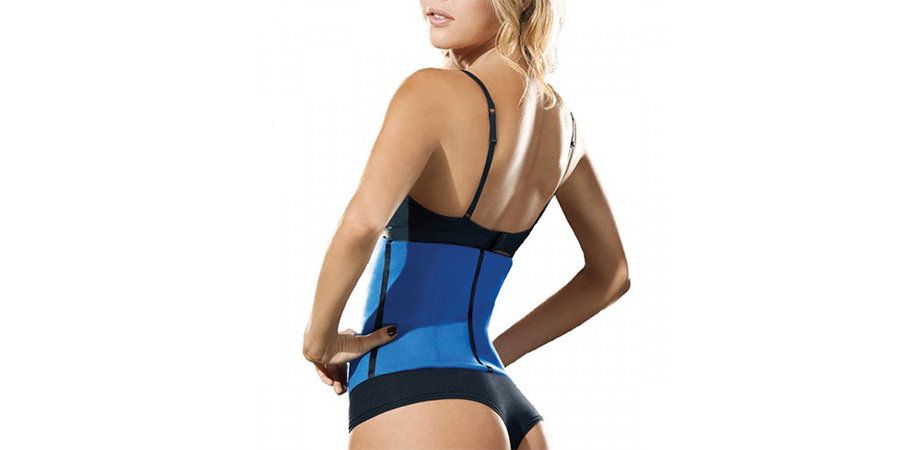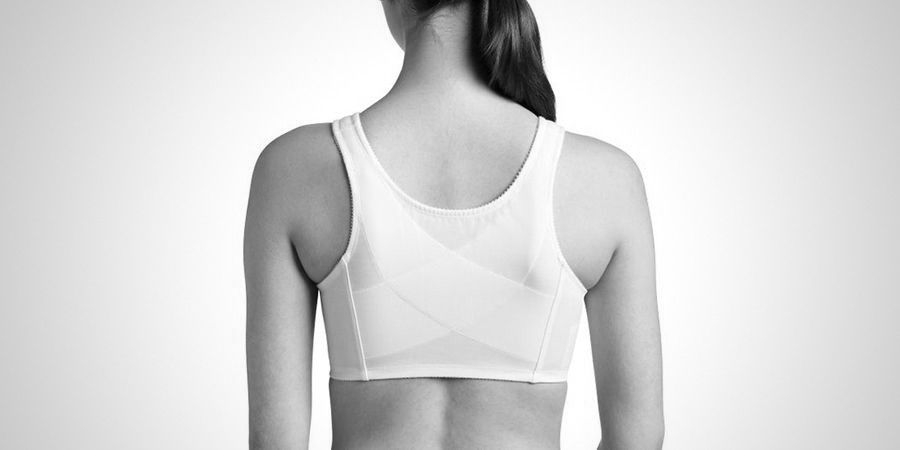Who hasn’t wanted to have a perfect hourglass shaped body at least at some point in their lives, huh? For most it has always been a goal that’s a bit too hard to achieve. However, if you are one of the majority and an insane amount of exercise and a strict diet is not exactly your thing, a simple shapewear product called “waist trainer” might be just the thing you need to finally lose those couple of annoying inches from your waistline. Shapewear products have always been a hot topic of controversial discussions and waist trainers certainly aren’t an exception. Let’s get our hands dirty and find out what this hype is all about.
All you need to know about waist training
There is a popular misconception that waist trainers are bad for your health and body because waist trainers are often confused with corsets, even though the effects of both products on your health and body are different. The difference between a waist trainer/cincher and a corset lays in the material and structure of the products – waist trainers use plastic boning and are usually made from latex contrary to the steel boning that is used in corsets. The goal, unsurprisingly, is similar since by wearing both corsets and waist trainers women try to develop an hourglass shape, meaning that their waist becomes smaller. Contrary to corsets – waist trainers (and waist wraps) cannot move or disfigure your ribs or internal organs. Wearing them daily is perfectly safe and truly can help you lose a couple of inches of your waist. Phrase “waist training” refers to a routine that involves wearing a waist trainer during the day and your workouts. Celebrities like the Kardashian sisters, Jessica Alba and many more say waist training has done wonders to their bodies by helping them lose belly fat.
Since we have covered the basics I would like to answer frequently asked questions and describe the how-to’s of waist training.
How waist trainers work?
The mechanics of a well designed waist trainer are pretty straight forward. It compresses your abdomen along with the lower section of the rib cage creating a restrictive layer around your core. Think of it as a band that you can often see athletes using on their joints such as on elbows, wrists, knees, and ankles. If applied properly, it provides some support for the core and additionally forces sweat glands to create more liquid by limiting the airflow to the skin in your midsection. It is obvious that waist cinchers has its pros and cons, however, if utilized correctly, it can improve your performance in training and development of strength, as well as growth of muscle fibers while accelerating fat loss. If you have read some superficial articles on waist training by now you might have come to a conclusion that waist trainers are a hoax and just a gimmick being marketed solely to bring revenue for companies selling them. Let me clear up some mist here. Yes, waist trainers do work. And yes, they can become an absolute disaster if you do not know what you are doing. I will give you some in depth information on how to use waist trainers to your advantage and let you reach your goals faster and more effectively.

Can a waist trainer be worn daily?
Yes, they can be worn daily. This is the short answer. Can they be worn all day long? Absolutely not. Waist trainer, just as any other tool, is the most effective when used accordingly and there are couple of things to be taken into consideration when wearing it. Keep in mind that for optimal results the waist cincher should be worn in a mix of days-on and days-off. This can include both your daily routine and exercise.
Wear it during your workout. Fasten it so it applies a slight amount of pressure on your waist making sure it isn’t too loose or uncomfortably compressing. When using waist trainer for the first time you might feel some discomfort and minor loss of mobility, which is normal as it functions similarly to your deep core muscles holding your core in a fixed and stable position. Along with the fixation of your core, your posture and stance may become more effortless since the waist trainer provides extra support to the core muscles that are responsible for keeping you stable and strong. This is a good thing.
While wearing a waist cincher you might feel that you cannot take deep breaths as freely as before because of the pressure that is applied to your core which is one of the reasons why waist trainers are being condemned and demonized. However, it has its benefits. During an active exercise, it makes your lungs work harder to breathe in fully. Essentially you are working out your diaphragm as well as your pelvic floor as you fight the inwards force of the waist trainer. Note that in order for waist trainer to give you best results you should only wear it every other training session.
Here is why. As you train while wearing waist cincher you are providing artificial stability to your core. And this goes for any type of training drills you are doing, be it running, squatting, doing push-ups or even crunches. With this extra support you will find that you can push yourself over your limits and seemingly be stronger which is a good thing. And now I must return to the point I made previously. If you wear a waist trainer every single time you work-out your body will slowly adapt to being supported through your core thus inhibiting the function of the deep core muscles. Think of it like this – if the deep stabilizer muscles are not given the resistance anymore, why would they put any effort in doing their job? Waist trainer is doing it for them.
Ultimately, this where the magic happens. Once you do your next training session without the waist trainer your stabilizer muscles need to fire with extra force. Now muscles need to adapt to what the rest of your body is throwing at them. During the session of wearing waist trainer you got the feel of contraction and restriction in your core so now without it your deep core gets to work twice resulting in a more focused muscle activation. Just as the previously mentioned athletes that only use protective bands during competitions or when they are pushing their limits. The rest of the time training has to be done without any restriction or additional support to let those supported muscle groups adapt. And there you have it. Use the waist trainer as a tool to let you push your boundaries. One workout session with the waist trainer, and one without it.
Can you wear waist trainer outside of your workout?
Yes. And same rules apply here. Wear it one day as you go to work. Feel the compression, feel the breathing. Technically you will be working out as you are doing your daily job since you body has to constantly fight any force and resistance it is introduced to. Take a break the next day. As long as you are not getting too dependant on wearing it all the time you are totally fine.
What results can you expect from waist training?
Faster strength gains. This is definitely where waist trainers shine. Along with that of course comes accelerated fat loss, particularly, in your midsection since this will be the place you are focusing on the most while wearing the waist trainer. Don’t get blindsided though about the fact that you sweat more around your abdomen. Sweat is just an extraction of water and it does not contribute to fat loss directly. If your primary goal is to lose some inches then proper diet paired with a consistent cardio workout is a must, although waist trainer will help you do it more easily.
How to pick the right waist trainer for you?
Same as regular clothing waist trainers come in different sizes so you can definitely find the one that suits you best. Generally when choosing the size of your waist cincher you should do measurements with a normal body posture without altering anything. It means you must measure the average size of your abdomen somewhere around mid breath. And same goes for your upper torso and hips. If in doubt, though, you can pick a size just slightly smaller than measurements because you are expected to lose some girth as you progress until you are ready for the next waist cincher that is even smaller. I would suggest sticking to well known brands that are already well established and widely used, as the material and quality control of the waist trainers is not as good in the cheaper models. You get what you pay for after all.
Taking measurements is pretty straight forward, you measure around your hips, little above the belly button, and around your chest. The most important part is getting the chest and hips as close to your size as possible since these will stay most consistent and you can be more liberal when it comes to belly measurements. For your own convenience, measure your belly both when fully exhaled and inhaled to see how much different are the results relative to your mid-breath. Some vendors and consultants may suggest to go for a bigger size if you are not sure implying that you may feel way too uncomfortable or unflattering. There is some truth to it, but good quality waist trainer will be flexible enough and even over time stretch a tiny bit to feel more well fitted. Remember that you goal is to reduce the size so it is still counter intuitive to get something that is too large. Good luck with your waist training boost!






